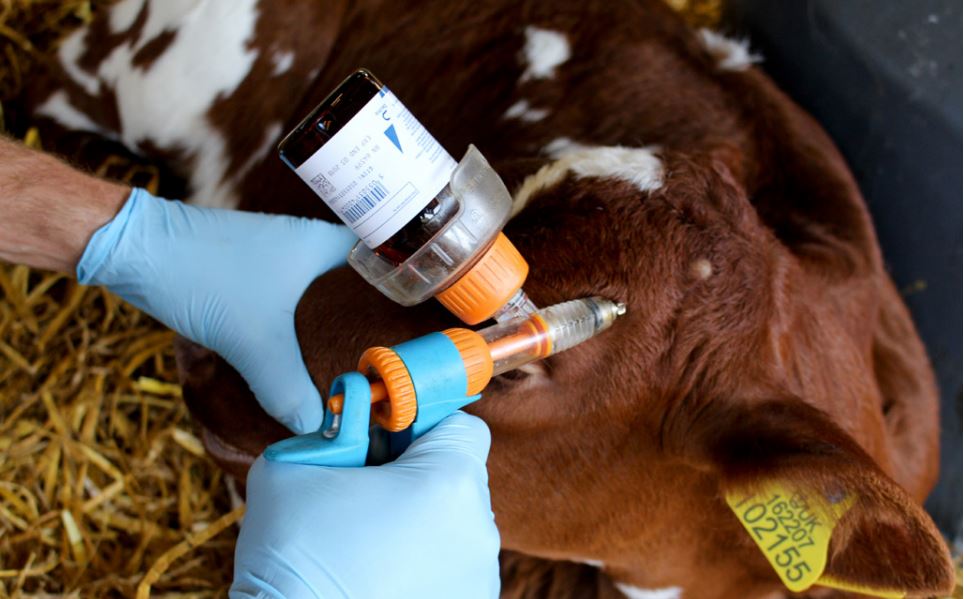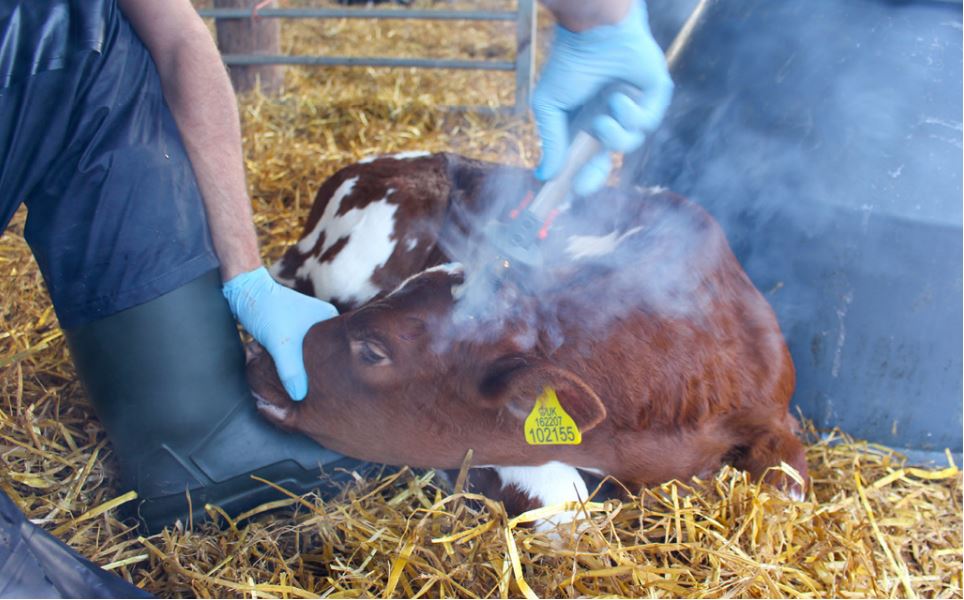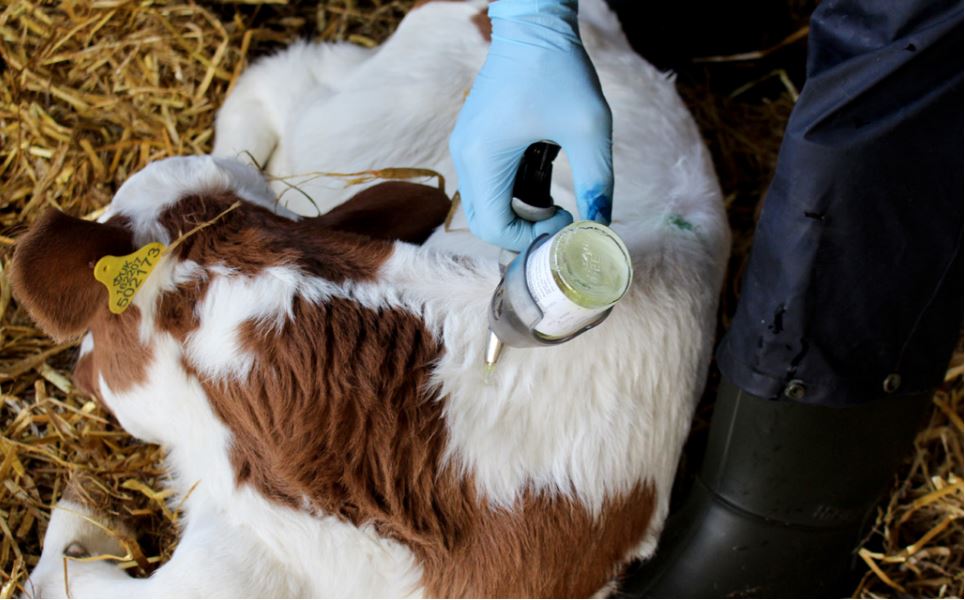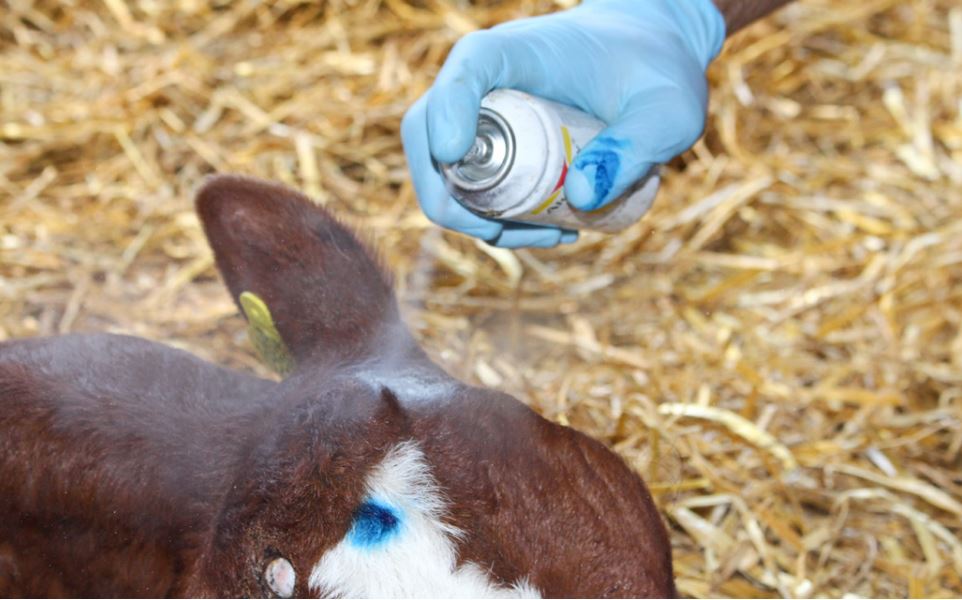- Home
- Knowledge library
- An 8-step guide to disbudding a dairy calf
An 8-step guide to disbudding a dairy calf
Disbudding calves is ideally done at 2–6 weeks of age using local anaesthesia to eliminate pain during the procedure and anti-inflammatories to reduce pain after. Making disbudding as painless as possible for all involved requires good training and an efficient protocol.
See also: How to disbud dairy calves efficiently, easily and painlessly
Step 1: Get organised
A dedicated disbudding toolbox will help to ensure the equipment is located together. This should include:
- A supply of new 10 ml syringes and 18 gauge needles
- Local anaesthetic and analgesic/anti-inflammatory drugs
- Disbudding iron and spares
- Fuel for the iron
- A wire brush
Step 2: Correct calf selection
Disbudding must be done before 2 months of age, but with a healthy calf, hot-iron disbudding is best performed at 2–6 weeks of age, before overgrowth of the horn bud.
Step 3: Appropriate restraint of the calf
The calf should not struggle through any part of the procedure. A stressed calf means a stressed worker.
Restraint does not need to be complicated; calves can be disbudded while standing and restrained by a competent handler. However, this is a two-person job.
When larger numbers of calves are involved, handling equipment (e.g. headbail or crush) should be used to block the calf’s head to operate more easily, more precisely, more efficiently and in a secure way.
Step 4: Effective anaesthesia
Using a local anaesthetic is a legal requirement for hot-iron disbudding.
Effective anaesthesia can be done by blocking the corneal nerve, which prevents the calf from feeling the cautery process of disbudding.
The best place to anaesthetise this nerve is halfway between the base of the ear and the corner of the eye. Locate the bony ridge situation in this area and inject 2–5 ml of local anaesthetic under the ridge.
A small amount of blood after injection is a good indicator of accuracy, as the nerve runs alongside the blood vessels.
The local anaesthetic is effective within seven minutes of administration. It has a variable length of action but is reliable for up to one hour.
If you are uncertain whether it has worked, you can repeat the nerve block after seven minutes. Always check that both horn buds are desensitised before applying the hot iron.
 : Farmers Weekly
: Farmers Weekly
Anaesthetic of the horn bud: find the bony ridge halfway between the eye and the ear
Step 5: Using the hot iron
Adapt the size of the cauterising iron to the area that needs to be cauterised so that the burn is not too large. Pulling the ear back displaces the corneal artery, preventing the risk of bleeding. When the iron is hot, apply it to the corneal process, perpendicular to the skull and rotate 45° in both directions to create an even cauterisation ring.
Make sure to:
- Never apply strong pressure, except with a Buddex-type system
- Never tilt the iron because this increases the risk of bleeding
- Never pull out the corneal process after disbudding. This will fall out on its own a few days after disbudding
The entire process of removing both buds should take no longer than 45 seconds. Slow disbudding is most commonly due to an iron that is not reaching a high enough temperature.
 : Farmers Weekly
: Farmers Weekly
Disbudding using a hot iron
Step 6: Pain relief
Behavioural monitoring of calves has shown the process to be markedly uncomfortable over the following hours and days.
The economic impact of the associated reduced feed intake and hence growth rate is well documented.
The use of non-steroidal anti-inflammatory drugs helps to reduce the pain associated with disbudding. This helps maintain feed intake, making it a cost-beneficial tool that also counters some of the stress.
 : Farmers Weekly
: Farmers Weekly
Administering pain relief
Step 7: Preventing infection
Use an antiseptic spray to limit infections and help cool down the cauterised tissues. The spray can be kept in the refrigerator a few hours before the intervention to improve its cooling effect.
 : Farmers Weekly
: Farmers Weekly
Applying disinfectant spray
Step 8: Monitor disbudded animals
In the days after the intervention, monitor the wound healing process and the general state of the animal, looking for indications of pain.
For calves older than two months, check for symptoms of sinus infection, indicated by the presence of pus, the calf scratching its head or keeping it low, apathy, anorexia or fever.
Acknowledgements
The technical content of this factsheet was produced in association with EuroDairy, Idele, AHDB and Farmers Weekly / Reed Business. Diagrams/photos: Farmers Weekly / Reed Business.
Useful links
If you would like to order a hard copy of the Calf management guide, please contact publications@ahdb.org.uk or call 0247 799 0069.
Podcast: Can sedation help reduce stress at disbudding?
Sectors:

